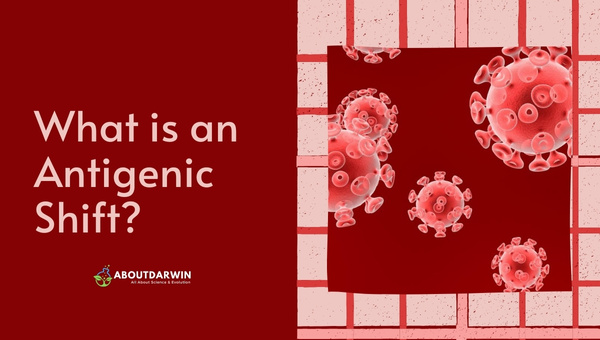Physical Address
304 North Cardinal St.
Dorchester Center, MA 02124
Viruses, much like all living creatures, evolve. This process of evolution allows them to adapt and thrive under different conditions, sometimes leading to differing disease outcomes and vaccine responses. Additionally, these modifications can drastically affect our ability to prevent or treat viral diseases.
Two critical mechanisms play significant roles in this viral evolution: antigenic shift and antigenic drift. Understanding these processes – antigenic shift & drift – provides valuable insights in our ongoing battle against viral diseases, from the common flu to more threatening illnesses like pandemic strands of influenza.
Thus providing us with a much-needed foundation for the development of effective vaccines and treatment strategies. So let’s dive into these—not so identical—twins of virology and find out what makes each ‘tick.’
Contents
What better way to point out the differences between our two focus keywords, antigenic drift, and antigenic shift, than using a detailed comparison table? Let’s dive into it!
| Aspect | Antigenic Drift | Antigenic Shift |
|---|---|---|
| Definition | A minor, gradual change in virus caused by mutations in genes for surface proteins. | A major, sudden change in the virus is caused by the re-assortment of viral genome, usually leading to a novel strain. |
| Frequency | Occurs frequently | It occurs less frequently but can be more impactful |
| Impact on Disease | A major, sudden change in the virus is caused by the re-assortment of the viral genome, usually leading to a novel strain. | New vaccines are needed as previous vaccines can be completely ineffective |
| Vaccine Effectiveness | Reduced effectiveness necessitating yearly vaccine updates for diseases like flu | This leads to seasonal epidemics due to small changes that evade immunity |
| Cause | Caused by errors in replication leading to small changes | Caused by genetic recombination or reassortment when two different strains of a virus infect the same cell |
The comparison between these two processes should help highlight their unique roles and impacts on viral evolution and disease spread.
Also Read: Exploring TCBS Agar: Composition, Uses and Preparation
Before diving into the meat of the matter, let’s lay down some groundwork. As a natural defense mechanism, our immune system is equipped with the ability to recognize harmful entities like viruses through their associated antigens – proteins found on the virus’ surface.
But what happens when these antigens keep changing?

The answer lies in a pervasive process known as antigenic drift. This process is one of the primary reasons why viruses, especially ones like influenza, remain a constant global health challenge.
Simply put, antigenic drift represents minor changes or mutations that happen over time as the virus replicates. These changes occur in genes that code for antigen proteins like hemagglutinin (H) and neuraminidase (N) in influenza viruses.
For instance, imagine if you’ve had a flu shot this year; your body now knows how to neutralize that particular strain of flu virus. But due to antigenic drift, when next year’s flu season comes around, there’ll likely be new strains your immune system doesn’t entirely recognize.
When it comes down to what causes this morphing effect, well, no malicious intent is involved – it’s all about survival from the virus perspective.
As any living entity thrives on replication and survival, so does a virus. In its mission for survival and propagation, while copying itself rapidly within host cells, it uses an enzyme known as RNA polymerase, which lacks proofreading ability.
And here’s where things get tricky: As errors pile up during this uncontrolled quick replication phase without any correctional oversight— voila! New viral strains with slightly altered antigens are born, leading to our hottie of today – Antigenic Drift!
Let’s take this all into perspective of how it impacts us. Due to antigenic drift, a virus can effectively “alter its appearance” frequently enough that it may escape our immune system’s recognition.
This constantly changing landscape of viral antigens is also what makes vaccine formulation such a challenge. Vaccine developers need to predict which strains will be dominant in the upcoming flu season and reformulate the vaccine accordingly every year.
And yet, despite the science and effort behind it, you can still contract the virus if it has drifted far enough from the strain used in crafting the vaccine.
Also Read: Unveiling MacConkey Agar: Composition, Principles, and Uses
An antigenic shift is a significant and sudden change in the proteins found on the surface of a virus. This mechanism usually results in a new strain of virus that is vastly different from its parent strains. Such shifts can occur when two different versions of a specific virus, like influenza, infect a single cell and mingle their genetic material to create a novel, third version.

This new strain inherits combinations of traits from its parent strains. Because these changes are so substantial, the human immune system often struggles to recognize and respond to it effectively. Hence, antigenic shifts can lead to major disease outbreaks or even potent pandemics when they occur in viruses that can infect humans.
Antigenic shift is most commonly associated with influenza viruses and can result in pandemics due to widespread susceptibility. The primary causes for the antigenic shift include:
Also Read: Simmons Citrate Agar: A Deep-Dive into Composition & Uses
Type A viruses undergo both antigenic drift and shift and are the only flu viruses known to cause pandemics. In contrast, flu type B viruses change only by the more gradual process of antigenic drift.
Antigenic shift occurs by genetic reassortment between currently circulating human viruses and influenza viruses of other origins and by re-emergence of a previously circulating virus.
A minor change to a flu virus is known as antigenic drift. Both influenza A and B viruses undergo antigenic drift. As the virus replicates, these changes happen continually. Over time, the small changes accumulate and result in a new strain that is not recognized by the immune system.
An antigenic shift can lead to a worldwide pandemic if the virus is efficiently transmitted from person to person.
Antigenic drift: A subtle change in the surface glycoprotein (either hemagglutinin or neuraminidase) caused by a point mutation or deletion in the viral gene. This results in a new strain that requires a yearly reformulation of the seasonal influenza vaccine.
Also Read: Isostatic Rebound: Uncovering Post-glacial Rebound Process
The main point to remember is that both Antigenic Shift and Antigenic Drift are key drivers in the evolution of viruses. We’ve dug deep into how these mechanisms cause viruses to change over time.
From subtle alterations due to Antigenic Drift to major changes caused by Antigenic Shift, we’ve seen how these processes can potentially affect disease transmission and impact vaccine effectiveness.
Understanding these concepts gives us valuable insight into predicting and countering diseases prevalent among both humans and animals.
It’s crucial in our ongoing battle against pandemics, shaping our preventative measures, vaccination strategies, and overall preparedness plans. So remember, deciphering the complex world of antigens is a monumental step towards building fortress-like immunity!